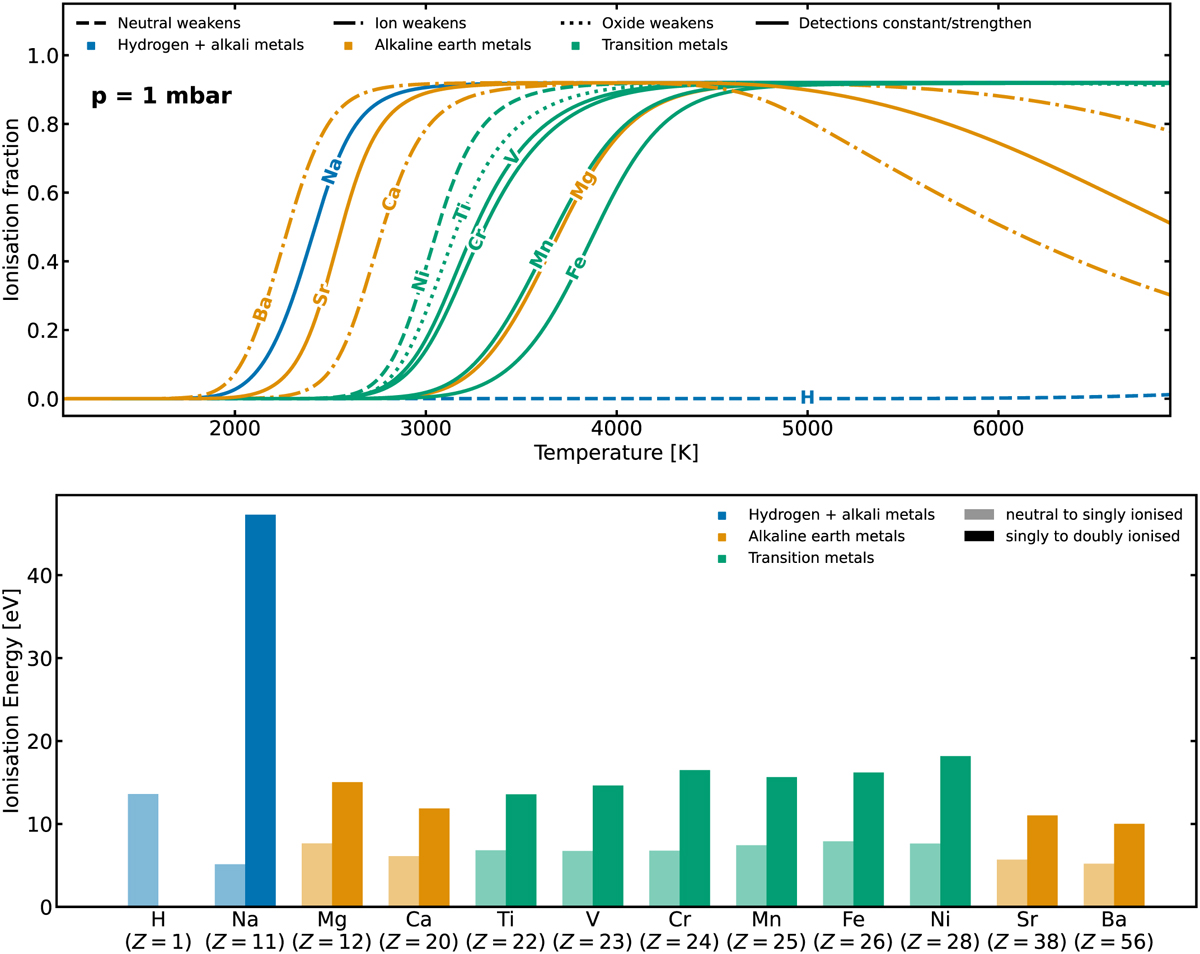Fig. 8

Download original image
Ionisation fraction and energies for the atoms detected in the atmosphere of WASP-189 b. The ionisation curves (top panel) were computed using FastChem, assuming chemical equilibrium at a pressure of 1 mbar and solar metallicity. Group 1 elements (hydrogen + alkali metals) are plotted in blue, and group 2 elements (alkaline earth metals) are plotted in orange. Transition metals are plotted in teal. The dashed, dash-dotted, and dotted lines indicate that the detected signal strength of the neutral atom, ionised atom, and oxide weakens over the course of the transit, respectively. Solid lines indicate that the signal strengths of the detections either strengthen over the course of the transit or remain constant, and thus behave as expected. The ionisation curves move towards lower temperatures with decreasing pressure (increasing altitude). Additionally, the fractions decrease at high temperatures for alkaline earth metals due to a second ionisation. The ionisation energies (bottom panel) are from the NIST database (Kramida et al. 2022) which predict that Na, Ba, Ca, Ba+, and Sr are all easily ionised. Regarding H, it may significantly ionise at very high altitudes. Because of the constant effective nuclear charge within groups 1 and 2, the increasing orbital radius causes the ionisation energy to decrease for higher atomic numbers Z (within the group). Within the same period (row), the ionisation energy increases due to the stronger attractive force of the nucleus. Both trends (within period and group) are generally not true for transition metals due to electron shells not necessarily being filled (and ionised) consecutively (Froese-Fischer et al. 1997).
Current usage metrics show cumulative count of Article Views (full-text article views including HTML views, PDF and ePub downloads, according to the available data) and Abstracts Views on Vision4Press platform.
Data correspond to usage on the plateform after 2015. The current usage metrics is available 48-96 hours after online publication and is updated daily on week days.
Initial download of the metrics may take a while.


